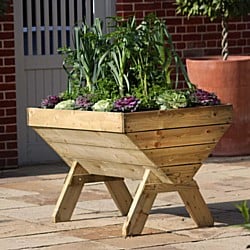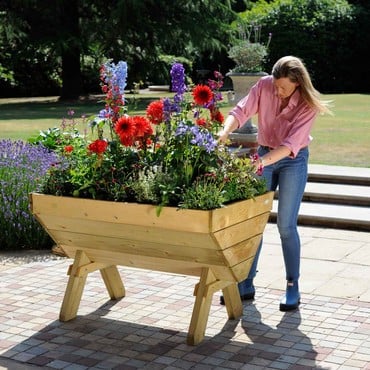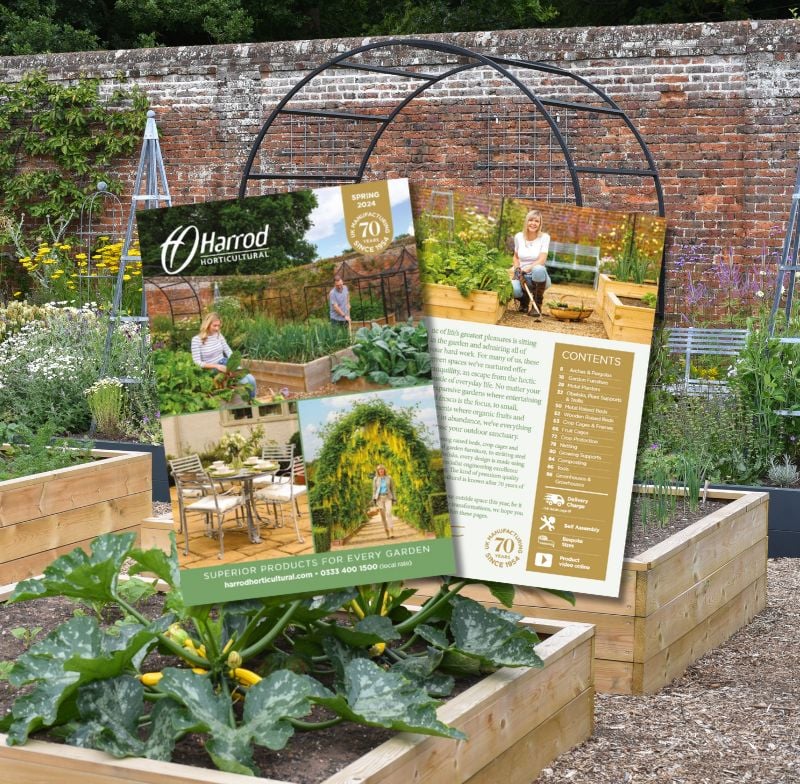Growing in vegetable planters you'll be surprised how many delicious vegetables you can cram into a small space and an attractive Manger Vegetable Planter can transform a barren patio into a vegetable oasis.
 If you’re intending to use a water butt as the water source for your Vegetable Planter then the very best option to distribute this stored water is the soaker hose. The soaker hose is porous throughout its entire length and more importantly, it operates at a low water pressure – ideal for your planned set-up with the water butt. The soaker hose can easily be cut to the desired size with a pair of sharp scissors and being of the same diameter as a standard hosepipe (0.5”), is easily connected to the latter – this is important when running a soaker hose from a water butt or mains tap as the hose will seep water over its entire length, so depending on the proximity of the water butt to your manger, you may need to introduce a piece of hosepipe to the installation.
If you’re intending to use a water butt as the water source for your Vegetable Planter then the very best option to distribute this stored water is the soaker hose. The soaker hose is porous throughout its entire length and more importantly, it operates at a low water pressure – ideal for your planned set-up with the water butt. The soaker hose can easily be cut to the desired size with a pair of sharp scissors and being of the same diameter as a standard hosepipe (0.5”), is easily connected to the latter – this is important when running a soaker hose from a water butt or mains tap as the hose will seep water over its entire length, so depending on the proximity of the water butt to your manger, you may need to introduce a piece of hosepipe to the installation.
On most cultivated soils and especially so in vetgetable planters, the water will seep out up to 50cm (19”) either side of the soaker hose and extending your system at a later date is also relatively simple and in-expensive. Two pieces of soaker hose can be easily joined in the same way you’d join a hosepipe.
It is important to remember that in a compacted space like vegetable planters and raised beds, the recommended plant spacing goes out the window! You can plant much closer together and create a micro-climate where plants will benefit, weeds are suppressed and soil-borne diseases – because the compost/soil you are growing in is replaced or at least replenished each year – find it difficult to thrive. Because you are planting many different crops in a small space, pests can also struggle to get a foothold; growing onions next to carrots, for example, helps deter carrot fly as they don’t like the odour of alliums! A trawl through the archives of Stephanie’s Kitchen Garden, a monthly diary of what’s been happening in our very own Victorian-styled kitchen garden, may well give you some further hints and tips.
As a general rule the closer you grow your vegetables, the smaller they will be; onions and beetroot are prime examples where those destined for pickling are planted around 5cm apart, half the usual spacing. Root crops and alliums are the easiest to manage (onions, parsnips, carrots, beetroot and leeks from your list) and I’d simply halve the recommended spacing for all these crops.
We would suggest you plant the shallow rooting strawberries around the edge of the vegetable manger and gradually work your way to the centre where root crops such as carrots and even the odd potato plant will flourish in the deeper soil and basically aim to cover all the soil.



























